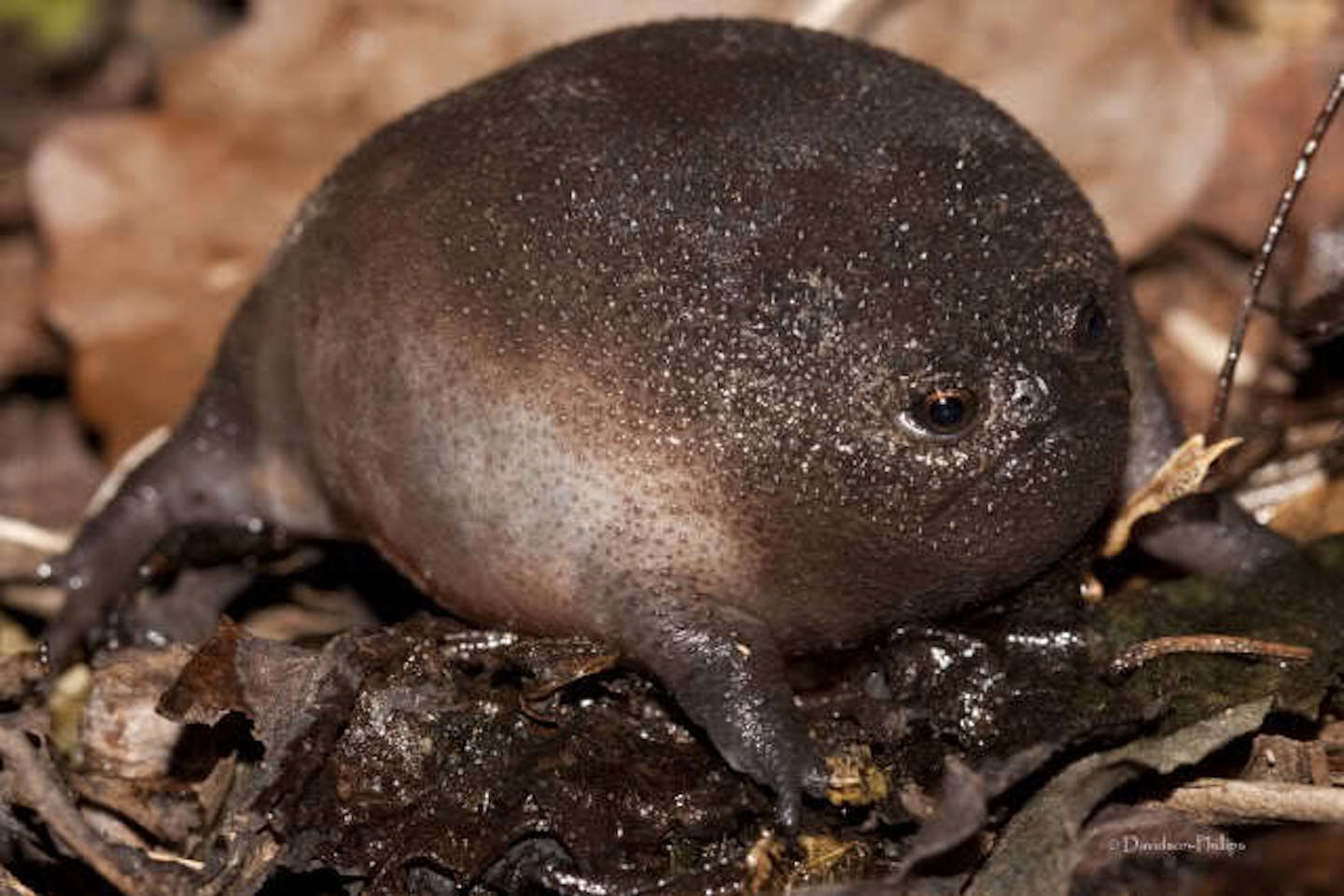Black rain frogs: burrowing and always in a bad mood
Each Wednesday, One Earth’s “Species of the Week” series highlights a relatively unknown and fascinating species to showcase the beauty, diversity, and remarkable characteristics of our shared planet Earth.
Watch out Grumpy Cat, there’s a new animal attitude-problem in town. The black rain frog has a perpetual frown that rivals any grimace around. This amphibian is only found at the southern coast of Africa, at elevations of up to over 3,300 feet, and its grumpy countenance might just be a result of how hard-working it is: it can burrow to create tunnels up to six inches deep.
Since the black rain frog is a burrowing species, it doesn’t need the presence of open water to survive. It digs to find moisture as well as something of utmost importance to a crank: privacy.
Should the black rain frog find itself in unwanted company, it’ll puff up and enlarge its body, to appear more intimidating. At only about 1.6 to 2 inches in snout–vent length, that might not seem like much, but occasionally, he’ll puff while burrowing, so that whatever is grabbing for him is unable to pull him out of his hideaway.
This crab apple of a frog isn’t a total hermit, though. While mating, the females secrete a special sticky substance from their backs so that the male frogs don't fall off. How thoughtful!
During mating season, the male frogs stay in the burrow to guard the eggs and will send out little chirps as part of their calls. Each egg nest consists of approximately 42–43 yellow eggs that are five millimeter (mm) in diameter inside eight mm capsules. That’s about the size of a pencil eraser, or half the size of a pea. Teeny tiny future grumps!
A black rain frog’s skin has no warts, but instead, pronounced widely spaced granules, like little bumps. They’re typically dark brown or nearly black in color, garnering them the nickname, “Angry Avocado.” We don’t know about you, but we think that’s the cutest thing we’ve ever heard.

.png?auto=compress%2Cformat&w=200)

